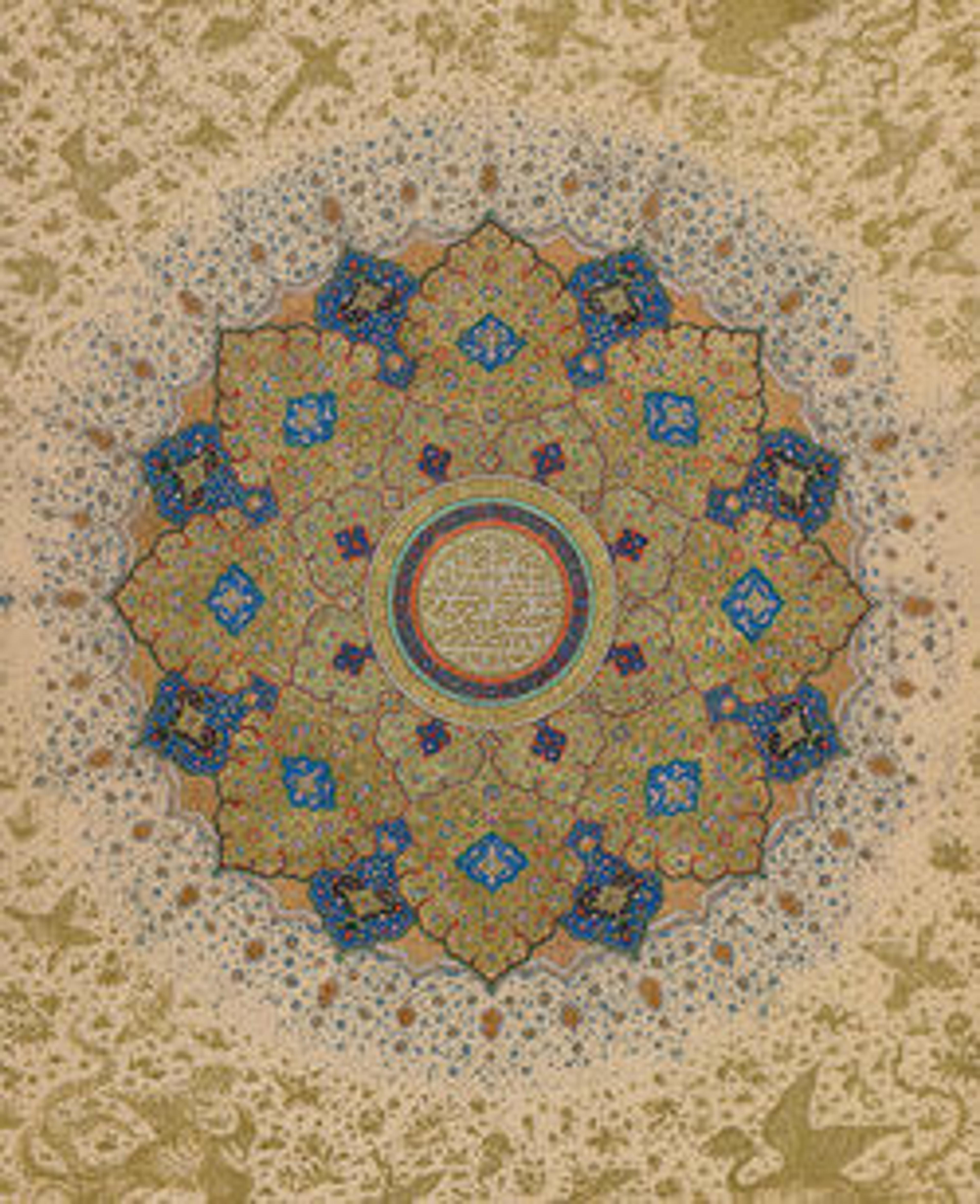Composite Camel with Attendant
While composite animals such as this one are known from earlier periods of Persian art, they gained in popularity toward the end of the sixteenth century. Here, comprising the overall shape of a camel, are found images of demons (divs), dervishes, embracing couples, rabbits, dragons, and even a Buddhist monk, sporting an earring and carrying a khakkhara (sounding) staff. The meaning of such images is open to interpretation, but many scholars believe them to have mystical significance—likely referring to the unity of all creatures within God.
Artwork Details
- Title:Composite Camel with Attendant
- Date:third quarter 16th century
- Geography:Attributed to Iran, Khurasan
- Medium:Opaque watercolor and ink on paper
- Dimensions:Painting: H. 7 7/8 in. (20 cm)
W. 5 1/2 in. (14 cm)
Page: H. 9 in. (22.9 cm)
W. 6 11/16 in. (17 cm)
Mat: H. 19 1/4 in. (48.9 cm)
W. 14 1/4 in. (36.2 cm) - Classification:Codices
- Credit Line:Gift of George D. Pratt, 1925
- Object Number:25.83.6
- Curatorial Department: Islamic Art
More Artwork
Research Resources
The Met provides unparalleled resources for research and welcomes an international community of students and scholars. The Met's Open Access API is where creators and researchers can connect to the The Met collection. Open Access data and public domain images are available for unrestricted commercial and noncommercial use without permission or fee.
To request images under copyright and other restrictions, please use this Image Request form.
Feedback
We continue to research and examine historical and cultural context for objects in The Met collection. If you have comments or questions about this object record, please contact us using the form below. The Museum looks forward to receiving your comments.
